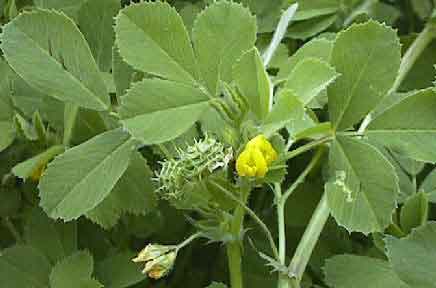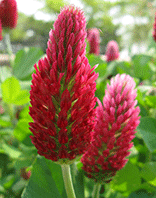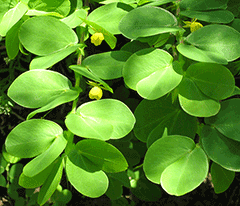| Organic Seeds | Edible Plants | Organic Pest Controls | Books | Tools, Propagation & Fertilisers | Sprouting & Microgreens | Poultry Supplies | Specials & Gift Ideas |

Top

We will send an email to this address*
when is next available
* we will use this email address only for this notification and then we will delete it.
 Home
Home
Green Harvest Organic Gardening Supplies is permanently closed as of 5pm on 1-11-2023.
We will not be taking orders by this website, in person, by phone or email. Our display garden and retail shop are closed forever.
Read more...
Phone:07 54357000
Phone calls will only be responded to sporadically and only in reference to orders placed prior to 2-11-2023. All the useful growing and organic pest management research and resources are available on this website for a while still.
|
|
|
Cover crops provide a living carpet of perennial plants for orchards. A ‘living mulch’ of low-growing legumes can provide many advantages, especially compared to grass, which aggressively competes with your fruit trees for water and nutrients. Cover crops can:
Legumes are plants such as clover, lucerne, peas, beans, medics and chickpeas. An important advantage of legumes is their unusual ability to obtain nitrogen, a major element needed for plant growth, from the soil air, as most plants are unable to do this. They do this by forming a symbiotic relationship with a group of bacteria called Rhizobium, which live within a specialised structure, called a nodule, on the plant's roots. The Rhizobia can take nitrogen (N2) from the air and convert it to the form plants normally obtain from the soil. This process is called nitrogen fixation. Why Inoculate? Rhizobia occur naturally, but they are very host-specific, that is, any one species of Rhizobia will only live with a few different types of legume. Consequently, when sowing legumes, the seed should be coated with a culture of the correct Rhizobium before sowing. This is referred to as inoculation. The bacteria are stored in peat, and as this is a living culture, it must be treated with care. It should be stored in the fridge and used within 3 months. To use, moisten the seed with a small amount of water and stir in the inoculant until seeds are coated. Then to allow even spreading of the seed over the seedbed, mix in enough agricultural lime, superfine lime or rock phosphate to dry the mixture out (use approx. 6 g of lime to 100 g of seed). This is called pelleting and makes fine seed easier to spread. Do not inoculate the seed until you are ready to sow it and do not leave the inoculated seed in the sun. Planting Tips
Getting Started Growing a cover crop is particularly easy in new orchards as the soil can be cultivated. The seed is then spread as evenly over the area as possible followed by raking to cover the seed. In established orchards a variety of techniques may need to be used. Poultry in movable cages can be used to bare the ground, which is then sown with seed. Alternatively an organic herbicide can be used to kill any grass or an area can be mulched with newspaper and hay until the grass has died. Find information on mulch here. Find information on organic soil improvement here. |
|
Standard postage is $12.95 (QLD) or $15.95 (all other states) for all orders which includes Bulk Seed Packs.
The $7.50 postage fee for up to 100 standard packets of seed, only includes the smaller 10 mē packets
not the 1000 mē or 4500 mē seed packs or kits.
Due to high postage fees there is a higher cost for bulk seed in some Australian States. |
 Barrel Medic
UT
Barrel Medic
UTMedicago truncatula A drought hardy, prostrate relative of lucerne, this is an annual legume that will self-seed every autumn to give winter cover in frost prone areas. The yellow flowers are borne on plants 40 cm high. Each plant has prostrate stems that spread to approx 80 cm long. In temperate areas sow March - May or August - October; in subtropical areas sow May - July. SB133 I SB134 400g I |
 Lucerne 'Sequel'
Lucerne 'Sequel'
 UT
UTNo WA Medicago sativa 'Sequel' is a bushy upright, winter vigorous, legume with a deep taproot, it requires fertile, well-drained soil. It is attractive to beneficial insects and bees, can be cut for mulch and is a great animal forage. In temperate areas sow March - May or August - October; in subtropical areas sow May - July. SL118 I No WA SL1191.5kg I No TAS / WA |
|
I
means that inoculant is included with the seed purchase.
Unsure how to use inoculant or its purpose? Find information about inoculant here. |
Lucerne 'Hunter River'
 UT
UTNo WA Medicago sativa 'Hunter River' is a bushy upright, spring and summer vigorous legume with a deep taproot, it requires a fertile, well-drained soil. It is attractive to beneficial insects and bees, can be cut for mulch and is a great animal forage. In temperate areas sow March - May or August - October; in subtropical areas sow May - July. SL120 I No WA SL1211.5kg I No TAS / WA |
|
Pinto Peanut is available as plants.
|
 Crimson Clover
Crimson Clover
 UT
UTTrifolium incarnatum Syn. Italian clover An attractive, fast growing, deep rooted, annual legume with spikes of deep crimson flowers highly attractive to bees. It is useful as part of an orchard groundcover. As a green manure it smothers weeds, fixes nitrogen from the air and improves soil structure. It has deep roots that penetrate the soil and break it up so can be used as a pioneer. It is widely grown as a protein-rich forage crop for cattle and other livestock and for hay. It has a bushy habit to 60 cm high and prefers well drained soils. Sow late March to April in temperate areas; in subtropical areas sow May to July. SC594 I SC595400g I |
 Red Clover
Red Clover
 UT
UTTrifolium pratense A summer vigorous, biennial legume for orchards; also useful as a green manure and bee forage. It has a bushy habit to 40 cm high and is drought tolerant. In temperate areas sow March-June or August-October; in subtropical areas sow May-July. SR109 I SR110400g I |
 White Clover
White Clover
 UT
UTTrifolium repens A year round cover in temperate areas, also useful as a winter cover in the subtropics. It attracts parasitic wasps of aphids and scales and prefers moist, well-drained soil. It is intolerant of shade. In temperate areas sow March-June or August-October; in subtropical areas sow March-June or spring. SW108 I SW109400g I |
 Wynn's Cassia
UT
Wynn's Cassia
UTCassia rotundifolia syn. Chamaecrista rotundifolia A spring and summer vigorous, perennial legume to 40 cm high, it dies back in winter but self-sows prolifically. It is only suitable for subtropical and tropical areas, as it requires a summer rainfall to do well. It will recover from a light frost. In subtropical areas sow October-January; in tropical areas sow during the wet season. Wynn's cassia is not eaten by horses and is only moderately palatable to cattle. SW110 I SW111200g I Wynn's Cassia is also available as plants. |
|
Green Harvest specialises in seeds which are:
|
 Home
Home
Green Harvest Organic Gardening Supplies is permanently closed as of 5pm on 1-11-2023.
We will not be taking orders by this website, in person, by phone or email. Our display garden and retail shop are closed forever.
Read more...
Phone:07 54357000
Phone calls will only be responded to sporadically and only in reference to orders placed prior to 2-11-2023. All the useful growing and organic pest management research and resources are available on this website for a while still.
We guarantee our seeds to the value of the purchase price. We are happy to replace the seeds, give you a credit or refund, whichever you prefer. Other than our guarantee to the extent of the purchase price Green Harvest gives no other warranty expressed or implied. No liability will be accepted by Green Harvest, its owners or employees as to the accuracy of any information. No responsibility will be taken for damage to property or persons due to information given about a product or technique. No responsibility will be taken for the loss of a crop or income due to information given about a product or technique.
 Shopping here is private and secure.
Shopping here is private and secure.
Copyright © 2001 - 2024 Green Harvest Organic Gardening Supplies
No part of this website may be reproduced without permission of the owner

